‘This quite extraordinary work, dealing with alienation, madness and death ... veers uneasily between crazy degeneracy and nihilistic brilliance.’ Robin Deneslow, Music Critic for The Observer.
I can definitely say that I gave more time, thought and effort to my production of Pink Floyd’s The Wall than to any other of the pieces that I directed over 21 years. The album came out in 1979, very soon after my road traffic accident the previous year, so I had plenty of time to listen to it and reflect on its various meanings.
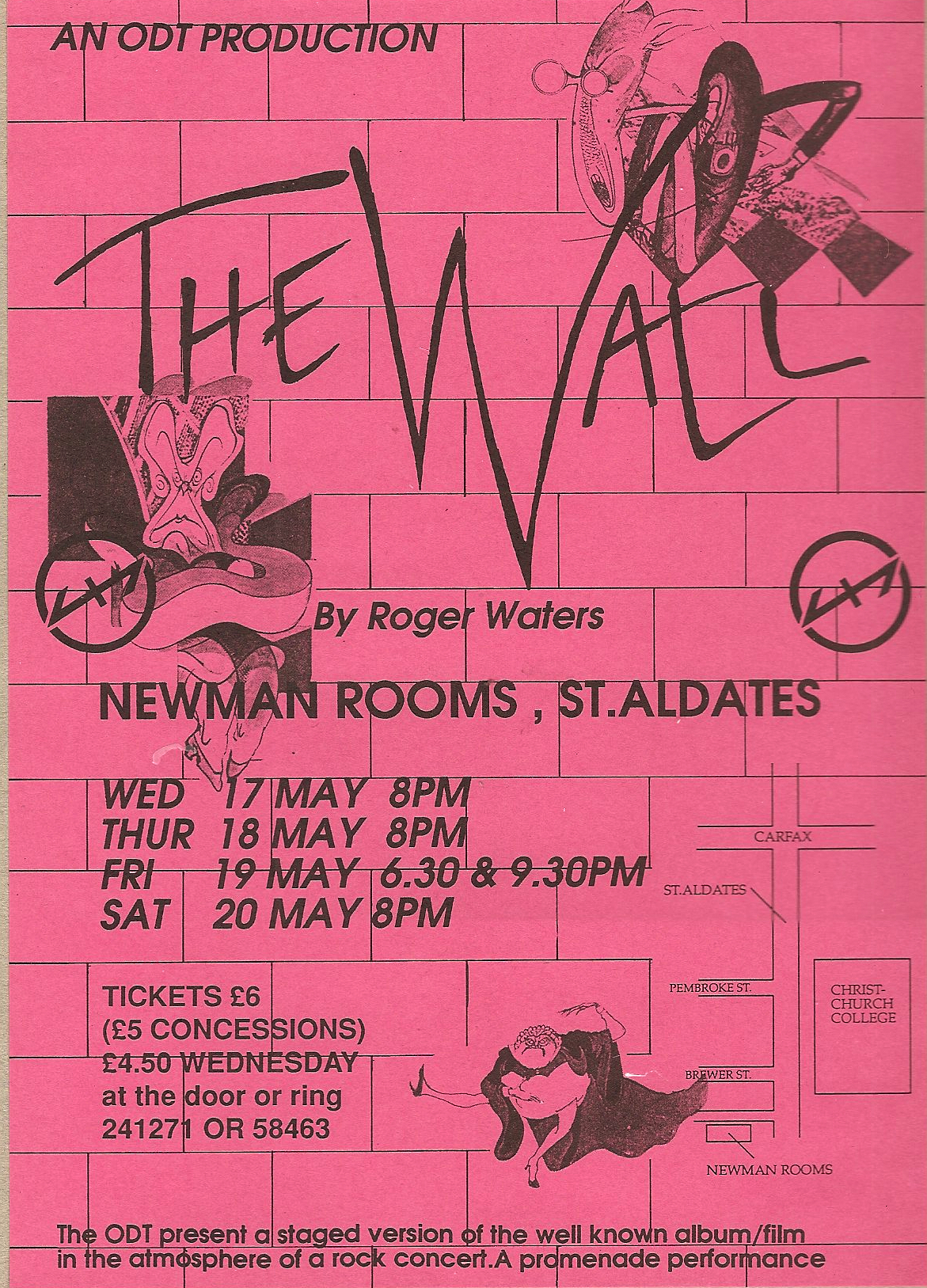
tickets £6, cheap at the price!
Again the Newman Rooms were the ideal venue, with the piece set in Promenade (cf JCSuperstar), and singers and audience free to move around the hall, as in a rock gig. ‘The audience were frequently ushered to different areas of the floor’, according to Daily Information reviewer, Tom Fryer. ‘As a result of this I felt much closer to the action – indeed the audience is an essential part of the show.’
The promenade staging also contributed to the feeling of Greek tragedy, which, as I describe in my programme note, was all-powerful for me throughout. There is an ‘implacable destiny’ about the piece, and a Chorus who comment on the action, revealing compassion for Pink at one moment and antipathy the next. ‘And are the three girl vocalists really the Sirens, luring the hero to his doom with the enchantment of their song?’
We erected a small stage at one end of the hall for the musicians. At the other end was the school room, and next to side walls the domain of Pink’s mother (robed in coloured chiffon bands, floated upwards by the Chorus to illustrate her femininity) and Pink’s own small room with his TV, guitars and table for injecting heroin.

sings with musicians led by Al Kenny
I had previously used the balcony for West Side Story and for Pilate in Superstar, and this now served as home for Pink’s Alter Ego*, the Story Teller. He recalls the Rock Star’s narrative, his joys, his sorrows and final surrender when, alienated and unable to perform after a heroin overdose, he yields the microphone to his other half. Raised high on a scaffolding plinth, the Alter Ego becomes a bizarre parody of a fascist dictator, castigating the ‘mob’, (the Chorus), who formerly adored Pink but now follow their new leader with even greater passion. Pink, totally disempowered, watches the action from the balcony as his Alter Ego has done before, while the latter is worshipped by the Chorus, who are a malleable presence throughout. Wearing party hats, they vociferously contribute to songs reverencing the war (Vera and Bring the Boys Back Home), taunting, jeering, flag-waving in a state of nationalistic fervour.
*The Alter Ego was a figure I created in order to make dramatic sense of the divided consciousness of the main character, who consistently talks about himself in the third person. Were I to revise the show now (more than 20 years later), this concept would have even more relevance for our social media age, in which we constantly create and manage online versions of ourselves. How prophetic Pink Floyd were!
At the instigation of the Alter Ego and Chorus, Pink, now totally vulnerable and demonised by what he thinks is his guilt, is brought to trial in front of the Judge by the Teacher, Mother, Girlfriend, and found guilty of ‘showing feelings of an almost human nature’. His punishment is for the Wall, which has served both as his protection and alienation, to be viciously torn down by those who helped build it.
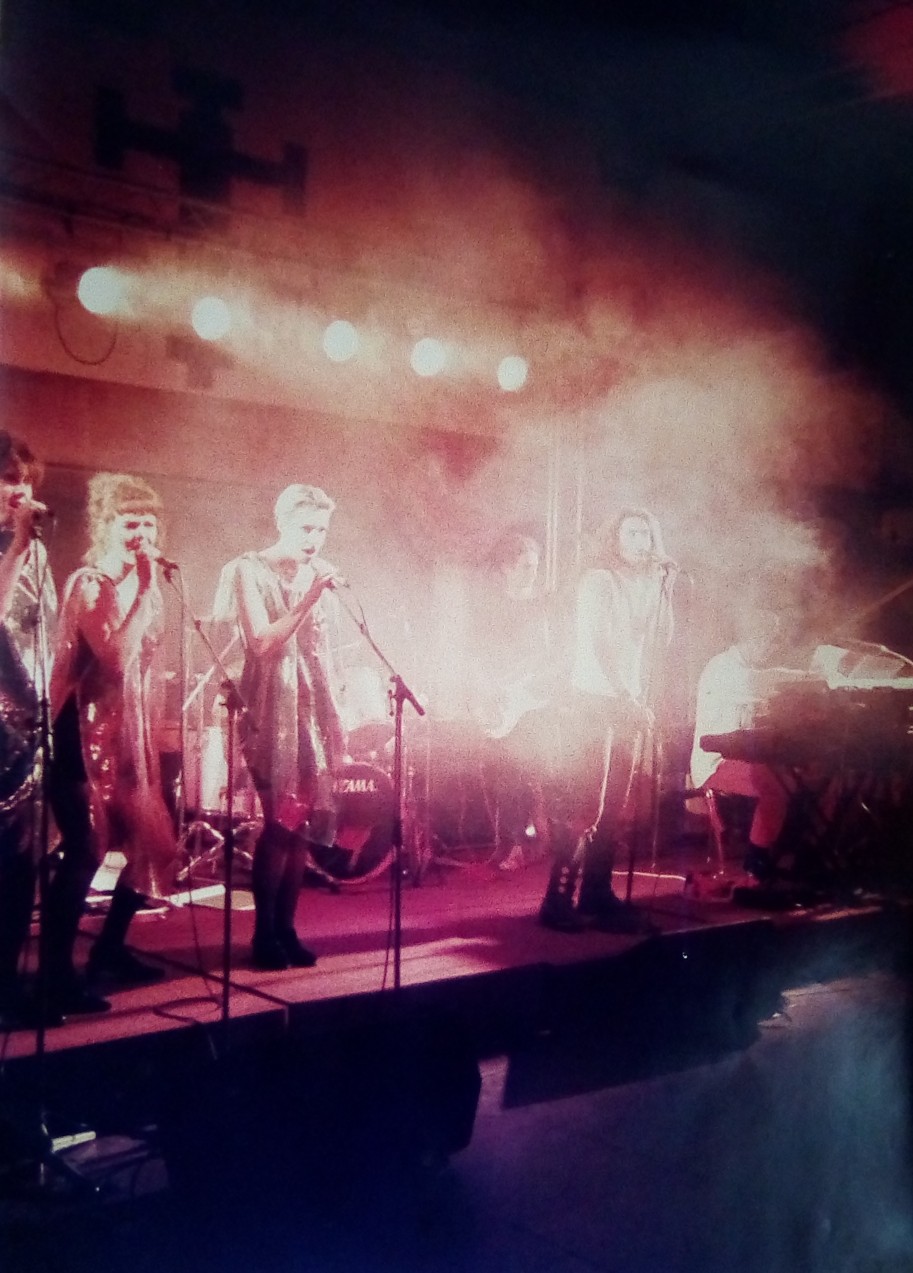
In the final song, Outside the Wall, it seemed to me that Star and Alter Ego, the two aspects of the character, come together in the knowledge that they are one:
'All alone, or in twos,
The ones who really love you,
Walk up and down outside the Wall.
Some hand in hand,
And some gathering together in bands,
The bleeding hearts and the artists
Make their stand.
And when they've given you their all,
Some stagger and fall after all it's not easy
Banging your head against some mad bugger's wall.'
In my production they did this quite literally, supporting each other physically in their mutual despair.
So both Star and Alter Ego represent aspects of the artist, of a human being unable to cope with the pressures of fame or ‘celebrity’. It seems that ‘Celebrity’, a latter day phenomenon, achieved status in the late twentieth century, but this, as we know, continues with ever greater force today. Celebrity distorts the artists’ humanity, in the same way as the power they achieve by becoming famous dehumanises their followers. It’s a no-win situation, ‘revelatory of man’s weakness and inability to cope, either as a lone individual or when subject to the power of mass movements.’
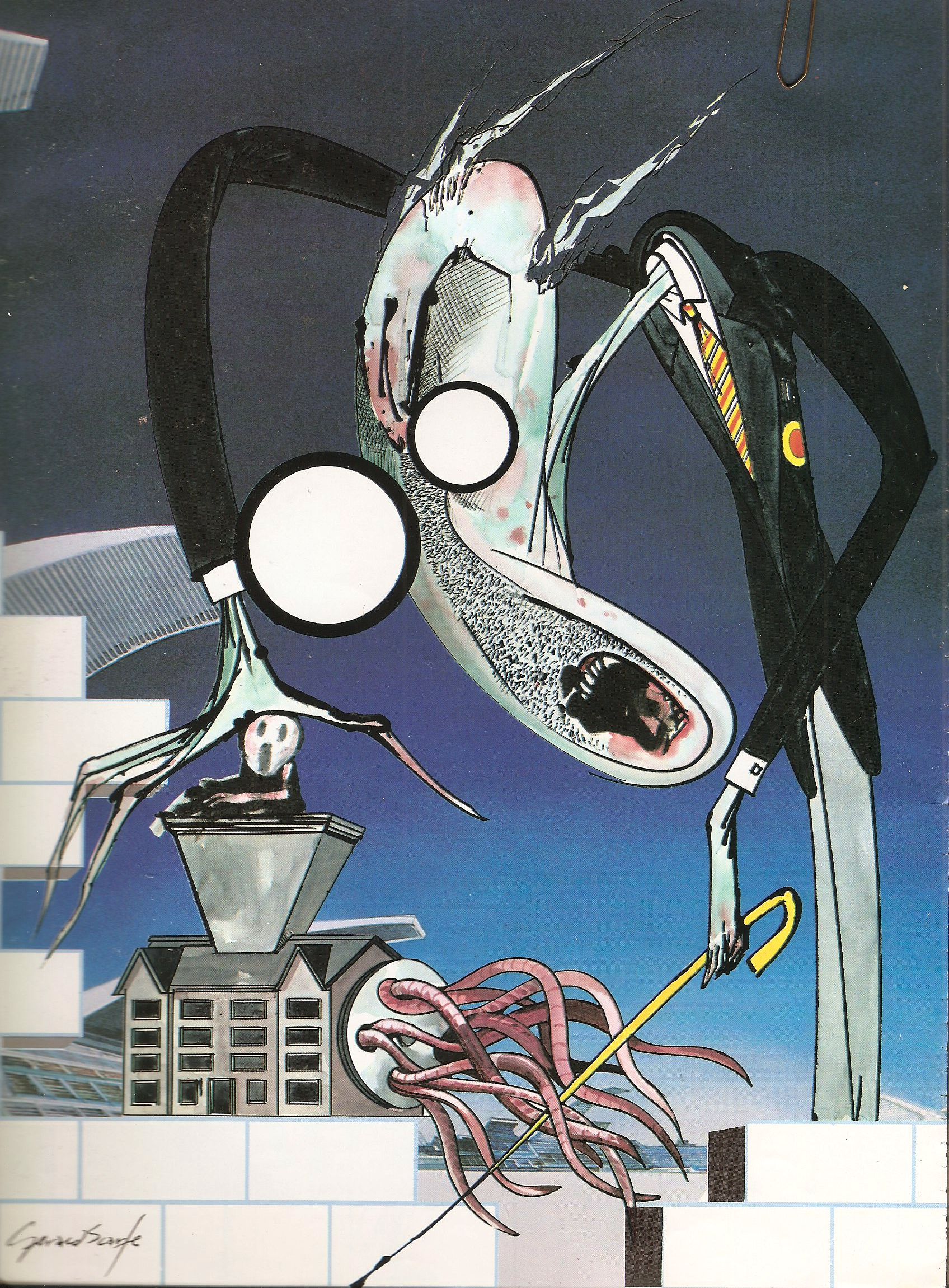
I decided to stage the album in 1995, fifty years after the end of the Second World War, which gave it a special resonance, as memories of the war occur throughout; we were then, as we are now, swamped with images of war. In an issue of Time International - 50 Years after V-E Day, printed May 9th 1995, there is an article entitled, ‘Hitler, the Evil that won’t die’, with quotes that point to the continuing presence of the conditions that give rise to leaders such as Hitler. ‘Hitler provides the proof that man without difficulty combines crackbrained beliefs about the world with a confident mastery of technology.’ The appeal of the consummate racist has reached across borders and decades because triumph of the ego is every malcontent’s pursuit. Some people […] resort to a resemblance of infantilism.’
This paragraph was actually written in 1995 at the time of the massacre in Rwanda. ‘The government turned guns on 10,000 Hutu refugees as the international community recoils.’ And could not similar remarks be made about our present global crisis, in which leaders such as Trump, Putin and Erdogan play games with people’s fragilities, provoking savage wars across the globe?

The ODT production of The Wall in its entirety.
Notice Pink's mother's (Kate Saffin) chiffon scarves
and the Alter Ego (Robert Bristow) as fascist dictator on his plinth ...
A few notes about the ODT production. The Rock Star was played very movingly by Silas Waring (now apparently a tattoo artist in New Zealand). Silas was introduced to me by a fellow director and, feeling very middle-aged, my first thought was ‘shouldn’t he get his hair cut?’ But of course not – he was just right as cult figure, singer, hero, with his ‘hoarse rock and roll voice’ and total emotional commitment throughout. Robert Bristow, Pink’s Alter Ego, I had worked with at Lord Bill’s, then as Pilate in JCSuperstar and in the Burton Taylor Beckett plays, so knew his acting ability and voice – hard, gritty, forceful, with the capacity to be, at times, ‘Hitlerian.’ Robert spoke/sang the narrative throughout, taking over from Pink when the latter could no longer face the pressures of stardom, becoming the fascist dictator with absolute control over the crowd.
The musicians, led by Al Kenny, were excellent. Set up on the small stage with all the flummery of a rock group, they gave a faithful rendition of the Pink Floyd score, vibrant, full of vitality and ultimately moving, each musician very talented in his field and contribution to the group.
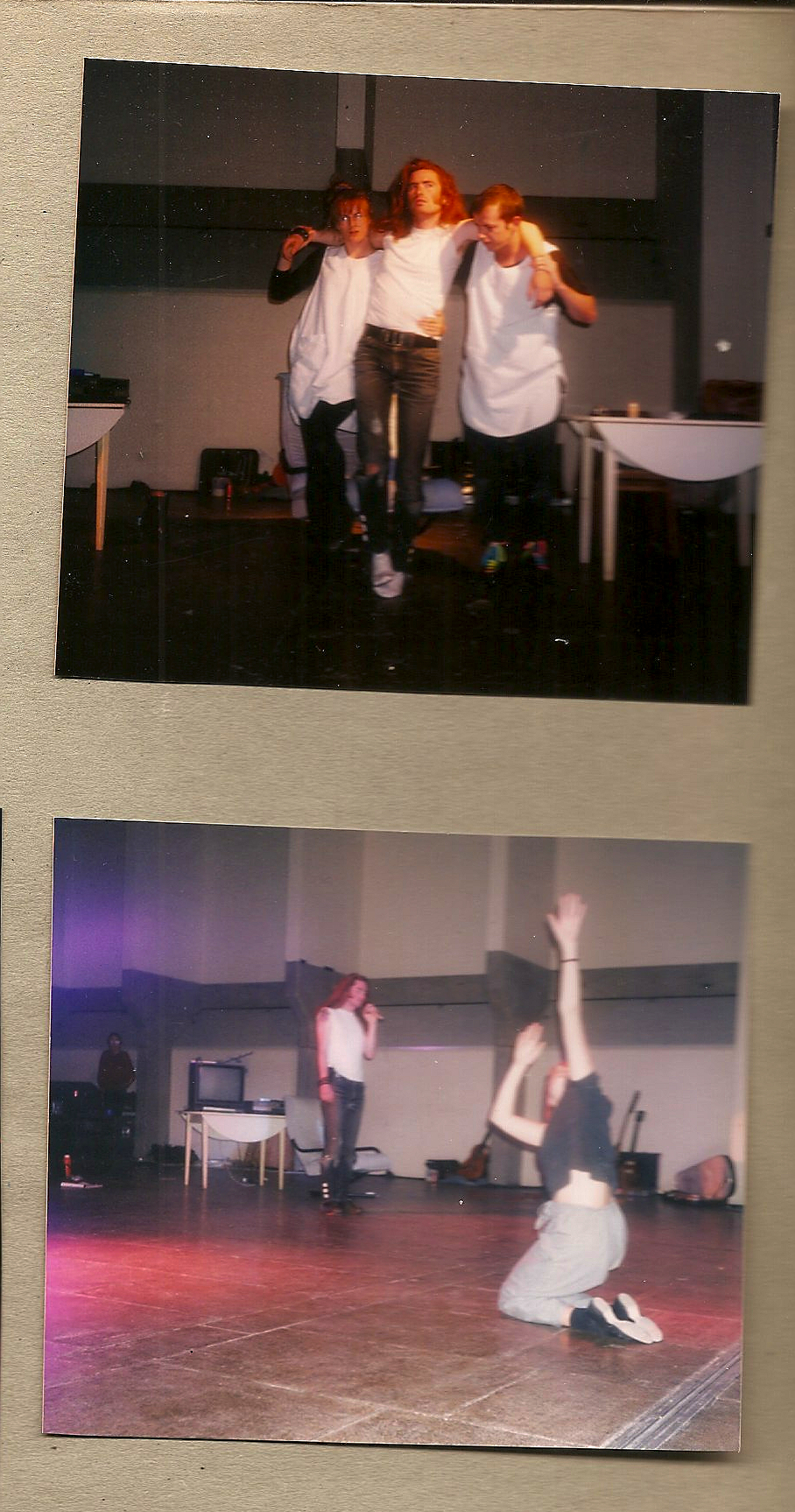
a) 'The show must go on.'
b) 'Don't leave me now ...'
Pink's girlfriend (Jessica Ferm)
dances as he sings his lament.
Maybe that’s one of the best things about community theatre of all kinds – the existence of such a wide range of talents that can be brought together to tell a story. The story may have very different characters, requiring very different talents, but can deliver a universal message with a very powerful effect.
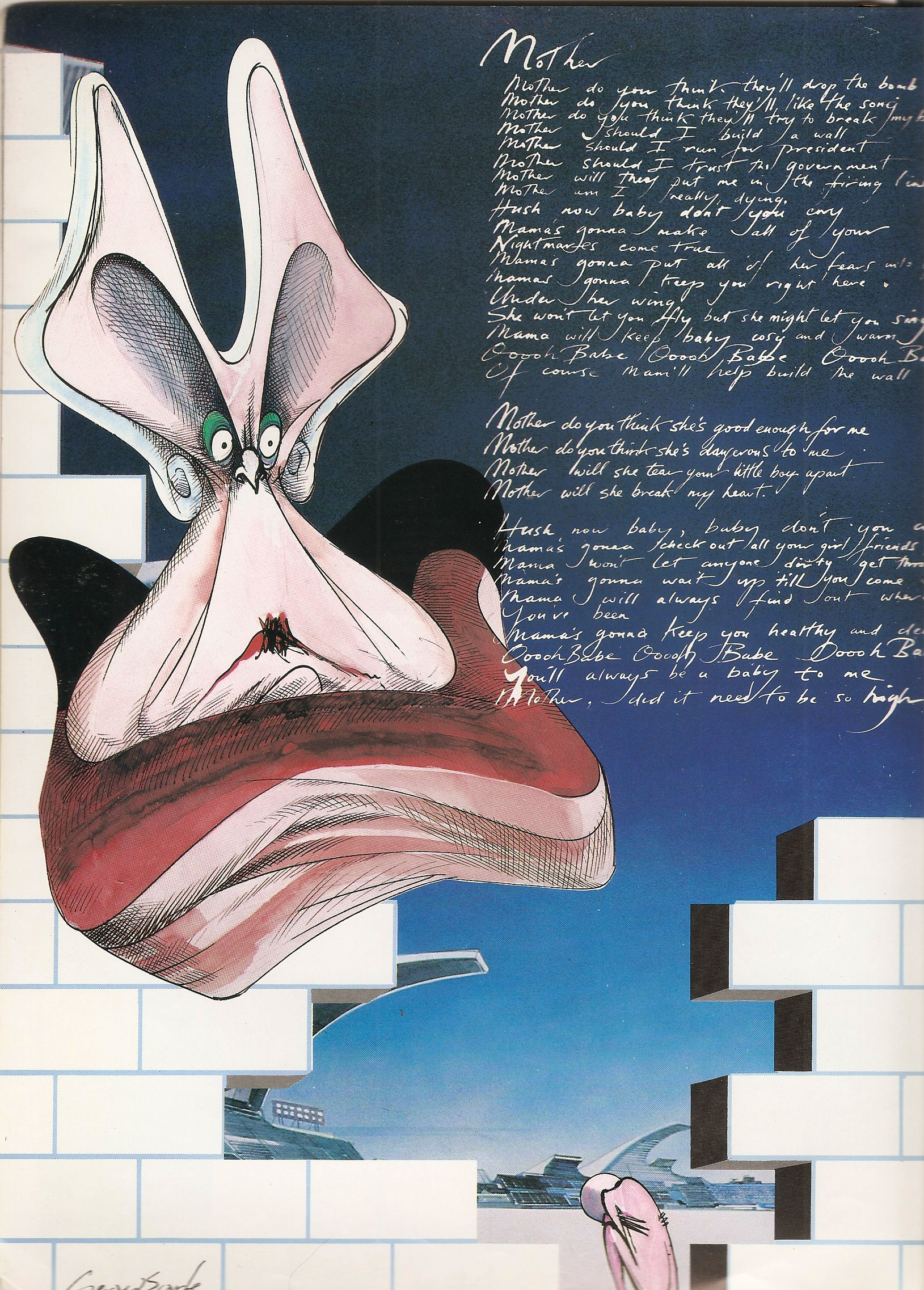
Robert, Pink’s Alter Ego, commented that ‘The Wall was, in my opinion, a crowning achievement for ODT. Here was a totally original realisation of the Pink Floyd work, taken completely from the music and Jackie’s response to it. Once again in promenade, it was a completely immersive piece for the audience, and a tremendous feat of co-ordination as audience and performers moved around the vast hall, going from rock concert to classroom to apartment etc.
This was an exhausting production for everyone involved because of the sheer scale of the project, but at the same time it was one of the most exhilarating experiences I have had in theatre.’
One last interesting note is that I didn’t have to pay anything at all to Pink Floyd for rights to do the show - what a nice surprise!